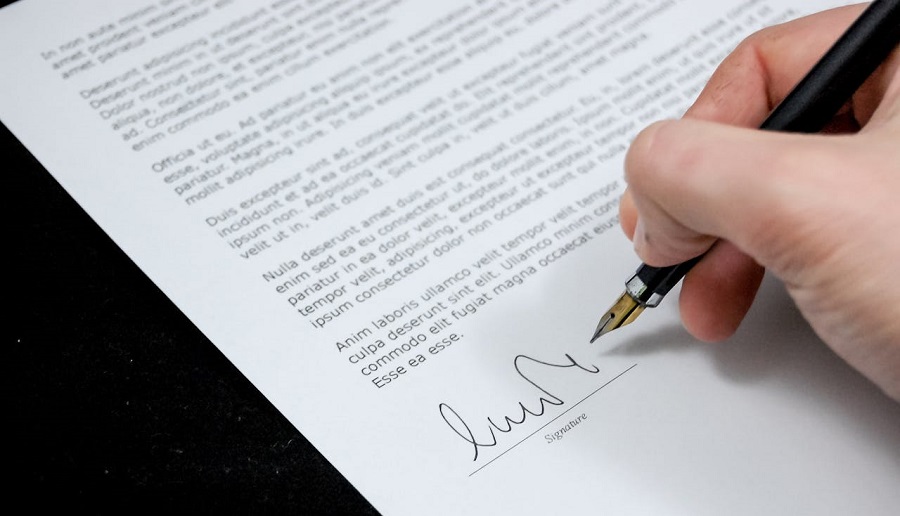Final demand letters: When to use them and what to include?

A final demand letter is an official document sent by a creditor to a debtor after friendly reminders have been ignored. It represents the last step before taking legal action. The letter sets a payment deadline and specifies the legal consequences of non-payment. It protects the creditor’s rights and encourages voluntary payment. In accordance with the Late Payment of Commercial Debts (Interest) Act 1998 and the Civil Procedure Rules, it is advisable to consult a solicitor to ensure compliance and secure debt recovery.

Key Takeaway: When and how can a final demand letter trigger payment?
Discover how to draft a final demand letter to obtain the payment owed.
What is a final demand letter?
A final demand letter is an official document sent by a creditor to a debtor after friendly reminders have been ignored. It differs from simple reminders due to its formal and binding nature.
It serves a specific role in the debt recovery process:
- Acts as an intermediate step between friendly reminders and legal action.
- Specifies the amount owed and sets a clear payment deadline.
- Informs the debtor of the legal consequences of non-payment, such as court proceedings or interest claims.
- Allows the creditor to rely on the Late Payment of Commercial Debts (Interest) Act 1998 to claim interest on overdue amounts.
- Prepares the ground for any future action in line with the Civil Procedure Rules.
When should a final demand letter be sent?
A final demand letter is sent after multiple friendly reminders have failed to secure payment. It comes before any legal action and serves as the ultimate official warning.
Several situations suggest that issuing a final demand letter is appropriate:
- Missed payment deadlines
When the payment date specified in the contract or mentioned in previous reminders has passed, the debtor is officially in default. Even if an initial reminder has been sent, failing to meet the deadline is a clear signal that a formal letter is necessary.
- No response to previous communication
If the debtor does not reply to emails, phone calls, or reminder letters, this shows inaction or lack of interest in settling the debt. A final demand letter formalises the request and documents these failures.
- Significant outstanding amount
When the debt represents a large or critical amount for the creditor’s cash flow, the delay can have serious financial consequences. In this case, the final demand letter acts as a formal tool to draw the debtor’s attention to the urgency of the situation.
- Repeated refusal or hesitation to pay
If the debtor delays, partially disputes, or refuses to pay despite multiple reminders, this indicates a risk of litigation. The final demand letter serves to clarify obligations, restate the exact amount owed, and mention the legal consequences of non-payment.
What essential elements should a final demand letter include?
A final demand letter must be clear, precise, and formal to document the payment request and prepare the ground for potential legal action. It should include several key elements:
Information about the parties
- Full contact details of the creditor and the debtor to clearly identify the parties.
- Reference to the unpaid contract or invoice, with a precise reminder of the debtor’s obligations and any breach of contract.
Amount and deadlines
- Amount owed, including any statutory interest for late payment and possible recovery costs.
- Clear payment deadline, usually between 7 and 14 days from receipt of the letter, in line with best practices under the Civil Procedure Rules Part 7 & Part 8.
Legal consequences
- Statement of the consequences of non-payment, such as legal proceedings or additional interest claims.
- The language must remain professional and firm, but without illegal threats, in compliance with UK law.
Proposal for amicable settlement
- Option to include an offer for an amicable settlement, encouraging voluntary payment and avoiding litigation.
Adaptation according to contract type and debtor
- B2B (business-to-business): The letter is more formal, emphasises contractual obligations and potential breach, and reminds the debtor of the right to claim interest under the Late Payment of Commercial Debts (Interest) Act 1998, within the framework of the Civil Procedure Rules.
- B2C (business-to-consumer): The tone can be more explanatory, clearly stating the amount owed, the deadline, and the legal consequences, whilst remaining firm and legally compliant.
How to send a final demand letter?
To ensure the legal validity of a final demand letter in the United Kingdom, it is often recommended to involve a solicitor. A solicitor can draft the letter in compliance with UK law, ensure it respects the Late Payment of Commercial Debts (Interest) Act 1998 and the Civil Procedure Rules Part 7 & Part 8, and manage follow-up in case of dispute.
Registered post with proof of delivery
Registered post with proof of delivery remains the most reliable method to confirm that the letter has been received and to establish the exact date of notification. It provides an official document that can be used as evidence in court if the payment is not made.
Certified email or email with read receipt
This method can be used if the parties have previously agreed to electronic communication. It allows for fast delivery and electronic tracking of receipt. Keep all read receipts to maintain a complete record in case of legal proceedings.
Hand delivery
Hand delivery can be considered if the debtor signs an official receipt. This ensures that the letter is actually received, although it provides less legal security than registered post.
Do I need a solicitor for a final demand letter?
A solicitor can provide significant advantages, particularly in terms of legal compliance and effectiveness:
- Ensure legal compliance: A solicitor ensures that the letter meets all legal requirements, including the Late Payment of Commercial Debts (Interest) Act 1998 and the Civil Procedure Rules Part 7 & Part 8, reducing the risk of challenges to its validity.
- Draft a professional letter: Solicitors can produce a clear, firm, and legally robust letter that states the amount owed, the settlement deadline, and the consequences of non-payment. A professionally drafted letter is often more persuasive to the debtor.
- Manage delivery and evidence: They can oversee the sending process to guarantee traceability, keep all supporting documents, and compile a complete record in case the matter progresses to court.
- Handle complex disputes: For significant debts, uncooperative debtors, or complex disputes involving contract breach, a solicitor facilitates a smooth transition to legal action if needed, while also increasing the chance of an amicable settlement.
FAQs
Can a final demand letter be sent verbally? No. A final demand letter must be in writing to be legally valid and to serve as proof in court if the debt remains unpaid. Verbal requests cannot establish a formal record of the creditor’s claim.
How long should I wait before sending a final demand letter? There is no fixed period, but typically, this occurs when the payment deadline has passed and the debtor has not responded, or if the debt is substantial enough to justify immediate formal action.
What happens if the debtor ignores the final demand letter? If the debtor does not pay within the deadline stated in the letter, the creditor can proceed to legal action. This may include filing a claim in the County Court or instructing a solicitor to pursue recovery.
The final demand letter carries significant legal weight, as it formalises the payment request and serves as official evidence in case of dispute. It can often encourage the debtor to settle voluntarily before any court action.
Get paid faster with expert legal support!
Qredible’s network of specialist solicitors can draft a powerful final demand letter that prompts payment, protects your legal position, and prepares your case for court if needed.
KEY TAKEAWAYS
- The final demand letter formalises the payment request and serves as official evidence in case of dispute.
- It comes after friendly reminders and before any court action, marking the final stage of escalation.
- Including the amount owed, the payment deadline, interest, and legal consequences makes the letter legally robust and persuasive.
- Sending the letter can encourage the debtor to settle voluntarily, reducing the need for court proceedings.
Articles Sources
- legislation.gov.uk - https://www.legislation.gov.uk/ukpga/1998/20/contents
- justice.gov.uk - https://www.justice.gov.uk/courts/procedure-rules/civil
- gov.uk - https://www.gov.uk/make-money-claim
- citizensadvice.org.uk - https://www.citizensadvice.org.uk/debt-and-money/
Do you need a solicitor?
Find a solicitor on Qredible in just a few easy steps
















